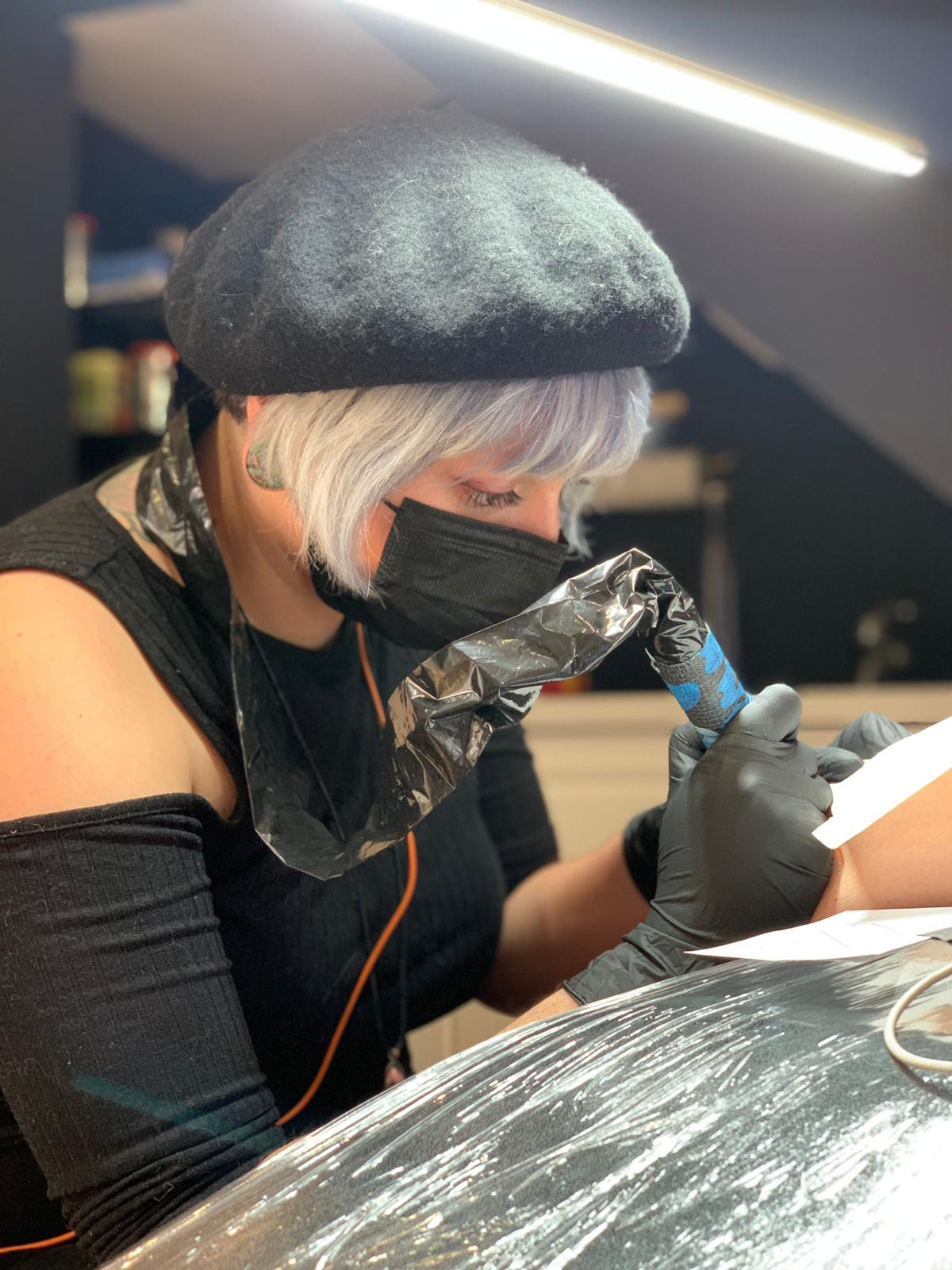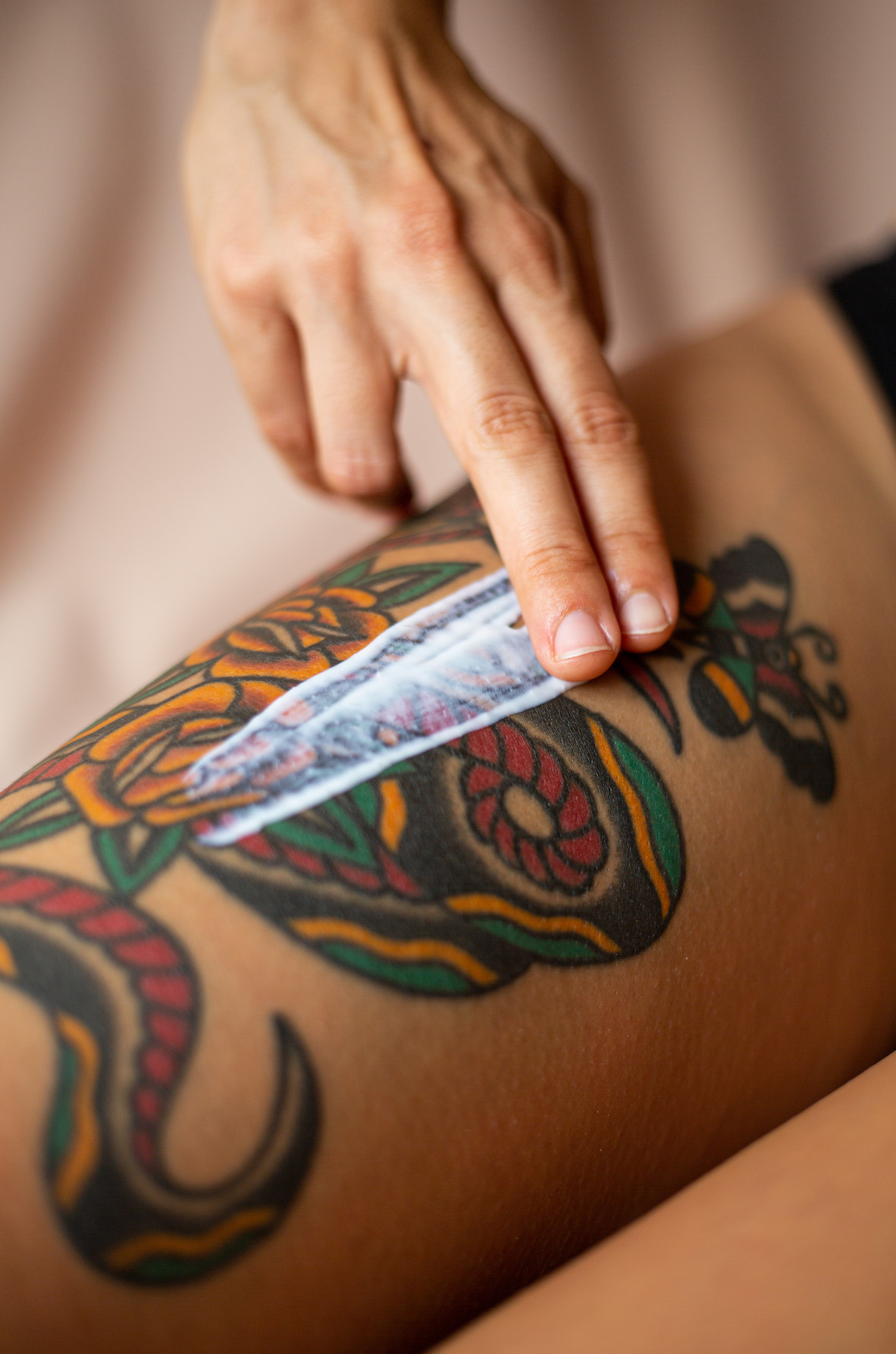Getting a tattoo is a significant decision, a form of body art that many consider a lifelong commitment. But as life progresses, and our bodies change, what happens to our tattoos? Do they stand the test of time, or fade away with the years? To delve into the science behind tattoos and aging, we spoke with Dr. Nicolas Kluger (@the_tattoed_derm), a board-certified Dermatologist and professor at Helsinki University Hospital. Dr. Kluger, an expert in skin diseases and the impact of tattoos on skin, and also an avid tattoo collector himself, provides valuable insights into how tattoos age and what factors contribute to this process.

Alt text: Dr. Nicolas Kluger, tattooed dermatologist and professor specializing in skin diseases, discusses tattoos and aging.
To understand tattoo aging, can you explain what happens to the skin during tattooing?
When you get a tattoo, the needles create microscopic punctures in the skin, triggering an immediate inflammatory response. This involves tissue swelling and the rupture of small blood vessels in the dermis, leading to minor bleeding. During the healing process, the needle punctures are sealed with exudate plugs. The epidermis, or outer skin layer, then begins to regenerate, shedding pigment that is too close to the surface. The tattoo’s permanence relies on the pigment that remains embedded within the dermis, the deeper layer of skin. This gives the tattoo its characteristic “matte” appearance once the epidermis has fully healed.
Once the pigment is in the dermis, immune cells called macrophages engulf the pigment particles. Some of these pigment-laden macrophages migrate to local lymph nodes. However, the majority of the pigment becomes lodged within fibroblasts and macrophages that remain in the dermis. Some pigment can also be found within the connective tissue of the dermis, residing between collagen fibers.
It’s important to note that tattoos are not static entities within the skin. Over time, the tattooed skin exhibits ongoing biological activity, including continuous macrophage activation and subtle inflammatory changes such as mild fibrosis in the papillary dermis, new capillary formation, and minor lymphocytic infiltration.

Alt text: Close-up of a tattoo artist tattooing skin, illustrating the initial inflammation and pigment deposit process in tattoo application.
Why do tattoos fade as skin ages? What are the key factors in skin aging?
Skin aging is a complex process influenced by a combination of factors. Chronological aging, the natural passage of time, is unavoidable, though genetic variations mean individuals age at different rates. Hormonal changes, particularly menopause in women, also play a significant role. Photoaging, or sun-induced aging, primarily affects sun-exposed areas like the face, neck, and hands and is influenced by geographical location and skin type. Lastly, lifestyle factors like smoking significantly accelerate skin aging.
Normal skin aging manifests in various ways, including reduced skin elasticity, increased paleness and dryness, heightened fragility leading to easy bruising and skin tears, uneven pigmentation, and hair thinning.
Tattoo fading is an inevitable part of the aging process. It occurs due to two main mechanisms: light-induced breakdown of pigments within the skin and the gradual transport of pigment particles away from the tattoo site via the lymphatic system. The migration of pigments by macrophages can also contribute to the blurring of tattoo lines over time.
The fading of tattoo colors can be likened to the fading of colors in fabrics or book covers exposed to sunlight. Interestingly, the change in tattoo color intensity is often subtle and not immediately noticeable due to the high color concentration of tattoo pigments, particularly azo pigments.
How does collagen, a vital skin component, relate to tattoo aging?
Collagen is a crucial protein that provides structure and elasticity to the skin. Skin aging is characterized by a decrease in dermal density and thinning, which is directly linked to a reduction in all essential dermal components. This includes collagen and elastin fibers, as well as glycosaminoglycans like hyaluronic acid in the extracellular matrix. Consequently, the skin’s overall viscoelasticity, its ability to stretch and return to its original shape, diminishes with age. This structural change in the skin matrix contributes to the altered appearance of tattoos over time.
What are the primary risk factors that speed up tattoo aging?
The most significant risk factor for accelerated tattoo aging is excessive sun exposure. This includes both immediate sun exposure following tattooing, which can impede healing and pigment settling, and chronic, unprotected sun exposure throughout life. Ultraviolet (UV) radiation from the sun breaks down tattoo pigments and damages collagen, leading to faster fading and blurring of tattoos.

Alt text: Example of tattoo aging over time showing fading and blurring due to sun exposure and natural skin aging processes.
What steps can be taken to minimize tattoo aging and keep tattoos looking vibrant for longer?
Several proactive measures can significantly minimize tattoo aging:
- Choose a Reputable Tattoo Artist: Experienced professional tattoo artists ensure proper pigment deposition at the correct depth in the dermis. Amateur tattoos, where pigment is often deposited unevenly or too superficially, tend to fade much faster.
- Avoid Micro Tattoos and Fine Details: Intricate, very small tattoos and designs with excessive fine lines are prone to blurring and fading relatively quickly as the skin ages and lines broaden naturally.
- Strategic Placement: Certain areas are more susceptible to rapid aging. Avoid tattooing areas prone to sun exposure (face, hands), friction (palms, soles, elbows), and natural aging (neck).
- Meticulous Aftercare: Strictly adhere to the aftercare instructions provided by your tattoo artist. This includes keeping the tattoo clean, moisturized, and crucially, protected from the sun during the initial healing phase.
- Sun Protection is Key: Protect your tattoos from the sun throughout their lifespan. Use clothing to cover tattoos whenever possible and apply high-SPF, broad-spectrum sunscreen to exposed tattoos daily, even on cloudy days.
Do factors like ink color, ink type, or tattoo placement influence aging?
Yes, these factors do play a role in how tattoos age:
- Ink Color: Lighter ink colors, especially white, are known to fade more rapidly than darker colors. White ink is often used sparingly by tattoo artists for highlights and small details due to its tendency to disappear over time.
- Tattoo Style: Tattoo styles with very delicate lines, like watercolor tattoos, or very small and finely detailed tattoos, are more susceptible to aging and blurring compared to bold, traditional styles with solid lines and color packing.
- Placement Matters: As mentioned before, areas constantly exposed to the sun, such as the face and hands, or areas subject to friction and movement, like elbows and palms, are more prone to faster tattoo aging. The neck, being a naturally aging area, is also less ideal for tattoo longevity.
Once a tattoo has faded, can the fading be reversed?
Unfortunately, tattoo fading is not reversible. Once the pigment has broken down or migrated, there is no way to restore the tattoo to its original vibrancy through topical treatments or lifestyle changes.
At this stage, the options to address a faded tattoo are limited to:
- Tattoo Touch-Up or Cover-Up: Revitalize the existing tattoo with a touch-up to re-saturate the color and redefine lines, or opt for a complete cover-up with a new, darker tattoo design.
- Tattoo Removal: If desired, laser tattoo removal is the most effective method to completely remove the faded tattoo.
What is your number one tip for preventing tattoo fading?
While there isn’t a single “magic bullet,” preventing tattoo fading is multifactorial. I would emphasize these core tips:
- Choose a Skilled Tattoo Artist: Starting with a well-executed tattoo is paramount for long-term appearance.
- Diligent Aftercare: Proper aftercare during the healing phase sets the foundation for tattoo longevity.
- Sun Protection, Sun Protection, Sun Protection: Consistent and thorough sun protection is the most critical factor in preventing premature tattoo fading.

Alt text: Man in his 60s with aged tattoos, demonstrating that tattoos can still look good in older age with proper care and placement.
Finally, will my tattoos still look good when I’m 60?
That’s a common question! The answer depends on several factors, primarily the age you got the tattoo and how your individual skin ages. If you got tattooed at 59, they’ll likely look pretty good at 60! However, a tattoo acquired at 18 will have undergone more significant changes by the time you reach 60. Ultimately, it’s a matter of personal perspective and accepting the natural evolution of your body art alongside your own journey through life.
